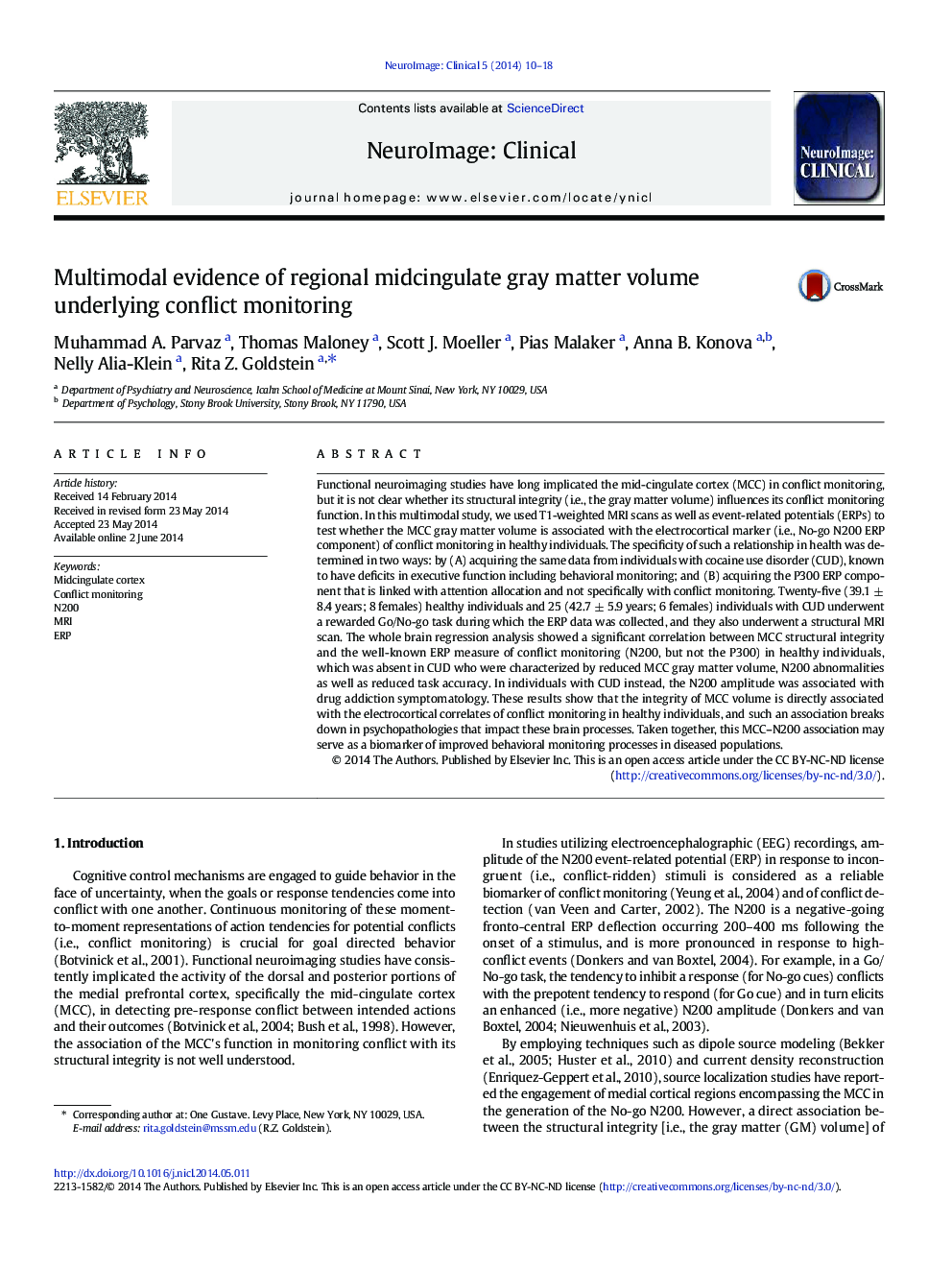| کد مقاله | کد نشریه | سال انتشار | مقاله انگلیسی | نسخه تمام متن |
|---|---|---|---|---|
| 3075435 | 1580962 | 2014 | 9 صفحه PDF | دانلود رایگان |
• No-go N200 amplitude is correlated with gray matter volume of the midcingulate cortex in controls.
• Such N200-midcingulate association is absent in individuals with cocaine use disorder (CUD).
• In the CUD group, No-go N200 amplitude is correlated with withdrawal symptoms.
• N200-midcingulate association can serve as a biomarker of intact conflict monitoring.
Functional neuroimaging studies have long implicated the mid-cingulate cortex (MCC) in conflict monitoring, but it is not clear whether its structural integrity (i.e., the gray matter volume) influences its conflict monitoring function. In this multimodal study, we used T1-weighted MRI scans as well as event-related potentials (ERPs) to test whether the MCC gray matter volume is associated with the electrocortical marker (i.e., No-go N200 ERP component) of conflict monitoring in healthy individuals. The specificity of such a relationship in health was determined in two ways: by (A) acquiring the same data from individuals with cocaine use disorder (CUD), known to have deficits in executive function including behavioral monitoring; and (B) acquiring the P300 ERP component that is linked with attention allocation and not specifically with conflict monitoring. Twenty-five (39.1 ± 8.4 years; 8 females) healthy individuals and 25 (42.7 ± 5.9 years; 6 females) individuals with CUD underwent a rewarded Go/No-go task during which the ERP data was collected, and they also underwent a structural MRI scan. The whole brain regression analysis showed a significant correlation between MCC structural integrity and the well-known ERP measure of conflict monitoring (N200, but not the P300) in healthy individuals, which was absent in CUD who were characterized by reduced MCC gray matter volume, N200 abnormalities as well as reduced task accuracy. In individuals with CUD instead, the N200 amplitude was associated with drug addiction symptomatology. These results show that the integrity of MCC volume is directly associated with the electrocortical correlates of conflict monitoring in healthy individuals, and such an association breaks down in psychopathologies that impact these brain processes. Taken together, this MCC–N200 association may serve as a biomarker of improved behavioral monitoring processes in diseased populations.
Journal: NeuroImage: Clinical - Volume 5, 2014, Pages 10–18
